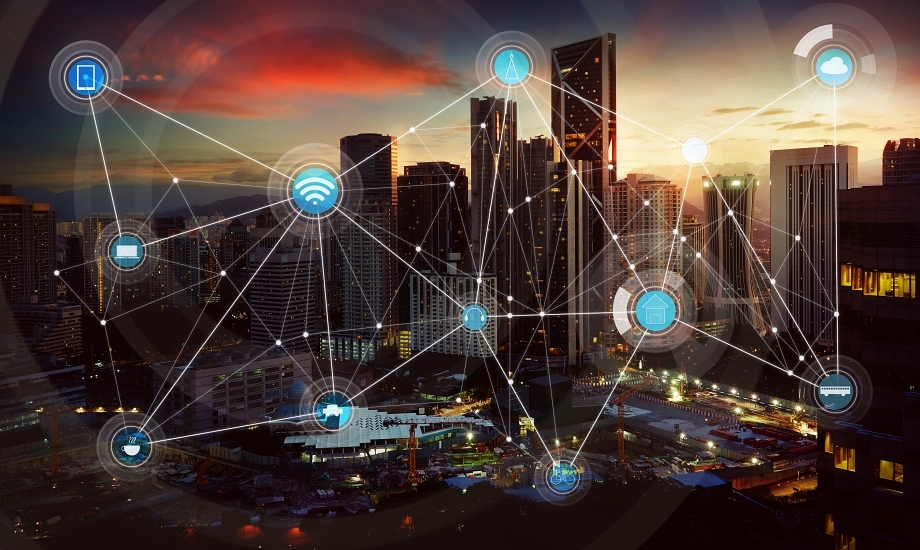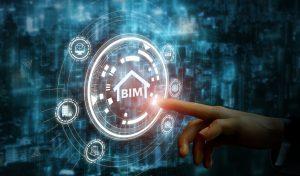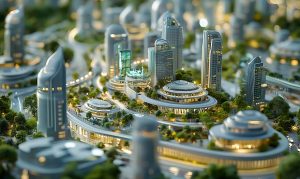
Drafting and design are embracing the future of smart buildings by integrating advanced technologies and data-driven approaches into their processes. Drafting and design play crucial roles in shaping the future of smart buildings, creating structures that are more efficient, sustainable, and user-friendly. Let’s delve into these technologies and approaches. Contact ITI Technical College today for more information.
Smart Building Drafting And Design: BIM
Skilled drafters and designers leverage Building Information Modeling (BIM) to achieve many goals. BIM is a crucial tool for smart buildings, allowing for the creation and management of data-rich 3D models throughout a project’s lifecycle.
BIM facilitates collaboration between architects, engineers, and other stakeholders, ensuring a unified understanding of the building’s design and functionality. It enables design analysis and simulation of building performance, including energy efficiency and structural  integrity, leading to optimized and sustainable designs.
integrity, leading to optimized and sustainable designs.
BIM lends itself to the prefabrication of building sections with modular projects. This approach creates more efficiency, sustainability, better design, and modularity. This technology helps divide a building into distinct units by identifying which rooms are suitable for prefabrication and which require conventional methods. Prefab construction can cut waste by up to 83% and minimize on-site timelines for faster project completion.
Integrating IoT And Sensor Technology Into Smart Building Drafting And Design
Smart building and design depend on advanced technologies such as IoT and sensors to control and maintain many components and functions in buildings.
- Smart buildings rely on the Internet of Things (IoT) devices and sensors to collect real-time data on various parameters like temperature, occupancy, and energy consumption.
- Designers and drafters incorporate these sensors into the building’s plans to enable automated adjustments of many systems. They include lighting, HVAC, resource usage, and enhancing occupant comfort.
- IoT integration allows for predictive maintenance, preventing costly equipment failures and ensuring smooth operations.
IoT, sensors, and integrated building systems are built into architectural design from the start to transform the way commercial spaces are planned and built. These technologies offer seamless automation and real-time monitoring for building supervisors and occupants. Unprecedented control over building operations, improved energy efficiency, and better security are possible.
Utilizing AI And Machine Learning
Artificial intelligence (AI) and machine learning (ML) analyze the data collected from sensors to optimize building operations, predict maintenance needs, and improve occupant experiences. Generative design tools powered by AI help architects explore multiple design options rapidly, optimizing layouts for efficiency, sustainability, and aesthetics. AI and ML assist in automating routine tasks like data analysis, scheduling, and resource allocation, allowing design professionals to focus on more complex aspects of the project.
|
“Drafting and design are playing crucial roles in shaping the future of smart buildings, creating structures that are more efficient, sustainable, and user-friendly.” |
Focus On Data-Driven Design In Smart Building Drafting and Design
Collecting and effectively using large amounts of data to operate smart buildings is crucial to efficient design and operations. The following are approaches that must be put into place:
- Drafting and design are becoming increasingly data-driven, using data from sensors, building performance analysis, and predictive maintenance to inform design decisions.
- This approach helps create buildings that are not only aesthetically pleasing but also highly efficient, responsive to user needs, and sustainable.
- The data feedback loop from smart buildings also helps shape the design of future projects, leading to continuous improvement and innovation.
Smart Building Drafting And Design: Creating Digital Twins
 Digital twins are virtual replicas of physical buildings that are continuously updated with real-time data. Drafting and design play vital roles in creating these digital twins, which allow architects and engineers to simulate different scenarios and optimize building performance before and after construction. Digital twins enable improved decision-making for building management, maintenance, and potential renovations.
Digital twins are virtual replicas of physical buildings that are continuously updated with real-time data. Drafting and design play vital roles in creating these digital twins, which allow architects and engineers to simulate different scenarios and optimize building performance before and after construction. Digital twins enable improved decision-making for building management, maintenance, and potential renovations.
Facilitating System Integration With Drafting And Design Technology
Drafting is essential for creating detailed plans of mechanical, electrical, and plumbing systems, ensuring they are properly integrated into the building’s design. Drafting also helps identify potential conflicts between different systems before construction, such as pipes running through HVAC ducts, preventing costly rework. Drafting professionals work with architects to precisely calculate the quantity of sustainable materials needed, reducing waste and promoting cost-effectiveness.
Drafters and designers plan for the optimization of building space, ensuring that smart systems are efficiently integrated and utilized. They create construction plans that are accurate and precisely detailed to minimize the risk of errors and costly rework. These professionals also ensure that building designs meet all relevant building codes, regulations, energy-efficiency standards, and cost reductions.
Building The Future With An Associate Degree
In conclusion, drafting is a vital component of smart building design, enabling the creation of efficient, sustainable, and cost-effective structures. Increase your drafting and design skills and knowledge by obtaining an Associate of Occupational Studies (AOS) Degree in ITI Technical College’s Drafting and Design Technology Program.
For more information about graduation rates, the median debt of students who completed the program, and other important information, please visit our website: https://iticollege.edu/disclosures/




